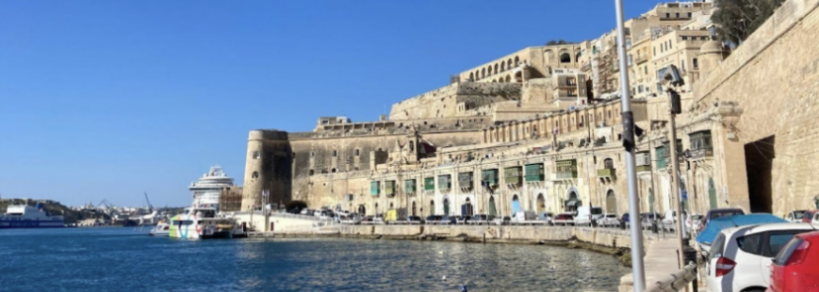
Sci&Tech Editor Sophie Webb recounts her previous trip to Malta, expressing her adoration of the Mediterranean island’s climate, history and mesmerising views
In March of this year I spent just over a week in Malta, a tiny Mediterranean island south of Italy and the southernmost EU nation. We were staying in Valletta, its small and very walkable capital city packed with lively bars and restaurants. As a former colony of Britain, achieving its independence in 1964, I noticed that Malta has identical road signs and emergency vehicles to those of the UK, as well as many of the same shops. In the true spirit of travel and adventure, we managed to avoid Iceland and M&S in favour of the local supermarkets.
We were visiting during Easter week, and Malta is a predominantly Catholic country in which Easter is a major event. We watched several religious parades flowing through the streets and outside churches. One of the largest squares in Valletta city centre had been entirely covered in candles, which was an awe-inspiring sight in the evening dusk. Given the time of year, strong winds meant that the island was dusty with sandstorms travelling north from the Sahara Desert. Cars were covered in a thick paste of dust, and on occasion immense clouds of it blocked out the sun, casting everything in a sickly light. This made the island look all the more dazzling when, on certain days, the dust cleared to reveal a jasmine sky.
The island look[ed] all the more dazzling when, on certain days, the dust cleared to reveal a jasmine sky
We visited Mdina, the ancient walled city used as the filming location for King’s Landing, the capital of Westeros in Game of Thrones. Naturally, this meant that the city was heaving with tourists in certain areas, yet eerily silent once you followed the right passages to quiet corners, seemingly untouched by time. Upon return to Valletta, we explored the Upper and Lower Barrakka Gardens, and I was enthused to discover that Malta is serious about ‘cat hotels’, designated living spaces in parks for stray cats.
My dad visited Malta for work back in the 90s, and his main piece of advice before I left for this trip was to avoid the ferry boat to Gozo, Malta’s neighbouring island. He said that he had feared for his life. This advice went ignored and we caught what I’ve named the ‘dolphin boat’, given the way it bounded across the ocean at high speed, leaping majestically in and out of the water. I found the experience hilarious, but not everybody on the boat would agree – vomit bags were generously provided. Gozo is smaller and quieter than the main island, but at the top of a vast hill we found the impressive Cittadella, with four or five different museums inside. We had bought Malta Heritage passes in order to access the museums; at each one, the staff member on duty would look at me quizzically whenever I presented my student pass. We discovered on the final day that the ‘student pass’ was actually not intended for university students but for schoolchildren aged ten to 17. It appeared that we had misread the website.
We walked along the cliff tops in the immense heat, after which an ice cream van emerged like a shimmering mirage in the desert
On Easter Sunday we visited the ruins of early human temples at Hagar Qim, which were covered in enormous canopies to protect them from the elements. We walked along the cliff tops in the immense heat, after which an ice cream van emerged like a shimmering mirage in the desert. We were compelled to indulge in blue slushies. On the final day we made the long bus journey to St Paul’s Bay on the other side of the island; a more typical Brits-abroad resort town with English pubs and chip shops abound. Our reason for visiting was the national aquarium, where for three extra Euros each we joined an engaging backstage tour of the laboratories where food is prepared and unwell fish are cared for.
Thanks to affordable, streamlined and very reliable bus routes serving every inch of the two islands, we felt like we had seen a whole country in nine days. Yet I still feel that if I were to return, there would be a great deal more to uncover. Malta is unlike anywhere that I have visited before; historically a meeting point for different cultural influences, and yet, today it feels entirely unique in its own identity.
Read more from Travel here:
La Semanta Santa: Visiting Seville during their Holy Easter Week
Comments